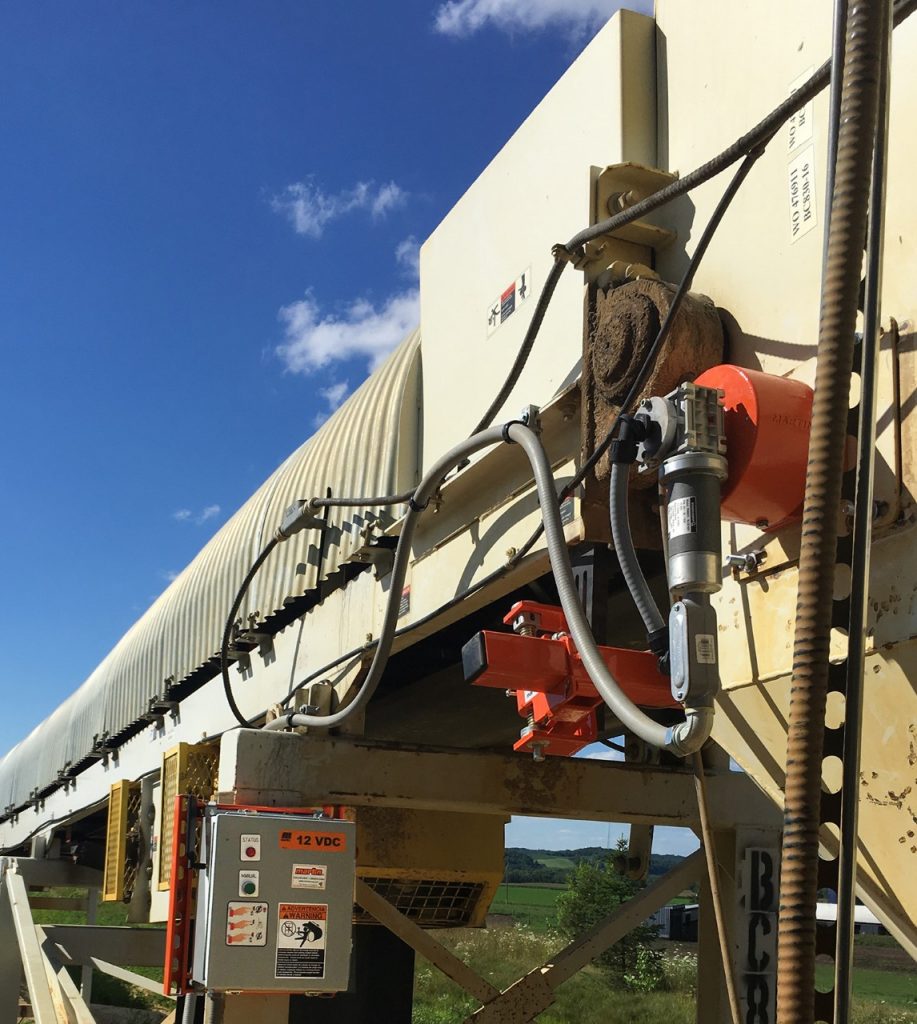Automated conveyor belt tensioner reduces maintenance



Martin Engineering, a global innovator in conveyor belt cleaning technology, has introduced an autonomous tensioning system that continuously monitors and delivers proper cleaner tension. By utilizing Martin Engineering’s intuitive new smart technology platform to maintain proper blade-to-belt pressure, the N2 Twist Tensioner provides the best possible cleaning performance throughout the life of the blade.
The system also alerts operators on the Martin Smart Device Manager app when the blade needs changing or if there is an abnormal condition. The result is efficient cleaning, increased safety, reduced labour and a lower cost of operation.
“We designed the unit for heavy-duty applications and tested it outdoors in punishing environments and applications,” Andrew Timmerman, product development engineer at Martin Engineering, said in a release. “The N2 Twist Tensioner has proven itself to be a rugged and highly effective way to maximize both cleaning efficiency and blade life.”
Importance of proper tensioning
Located on the head pulley, primary belt cleaners commonly have a twist, ratchet or spring tensioner to ensure the cleaner blade stays in consistent contact with the conveyor belt for proper cleaning and material discharge. Prior to the new design, belt tensioners had to be monitored and adjusted manually, in some applications on a daily basis, so they would maintain optimum pressure and carryback removal. Estimating when blades needed changing was often a guessing game that, if left too long, could lead to belt damage.
Inadequate tensioning causes carryback to cling to the belt and spill along its path, piling up under the conveyor and emitting excessive dust. This requires extra labour for cleanup and can affect air quality. Over-tensioning leads to friction damage to the carrying side of the belt, premature blade wear and potential splice damage. Both scenarios create unsafe work conditions and raise the cost of operation significantly.
Next Step in Tensioning Technology
The N2 Twist Tensioner automatically maintains precise cleaning pressure throughout the entire life of the blade, without maintenance. The tensioner applies the proper amount of torque to deliver optimum cleaning pressure at the blade tip, supporting the constant angle radial pressure (CARP) cleaner design that withstands the force of heavy bulk cargo but retains a consistently tight seal across the belt profile.
Martin Engineering’s smart technology platform monitors blade wear and informs operators when the blade needs changing from control systems that are housed in a durable weather-resistant NEMA 4 control box. Experts recommend changing blades before there is a chance of detachment or a “pull through” (inversion under the head pulley). In the event of a premature pull through, operators are alerted, and the tensioner’s internal self-relieving coupling rolls over. A blade detachment also triggers an alert allowing operators to quickly shut down the system and avoid belt damage.
The electrical system runs both the tensioning system and the sensors. The unit is powered by a rechargeable 12-volt battery life and can also be specified to run on 110 to 220 volt AC power. The system includes all necessary components for installation based on the power supply option.
Lower maintenance and efficient performance
The N2 Twist Tensioner and Smart Device Manager app ease the burden on managers and workers so they can focus their attention on other critical details of the operation. Precise tensioning and improved belt cleaning reduce the volume of dust and spillage from carryback, improving workplace safety and decreasing the labor needed to maintain and clean around the discharge zone.
“This is a game-changer for most bulk handling operations that struggle with tensioning and carryback,” Timmerman concluded.
Martin Engineering is a global innovator in the bulk material handling industry, developing new solutions to common problems and participating in industry organizations to improve safety and productivity.
For more information, visit www.Martin-Eng.com.
Comments